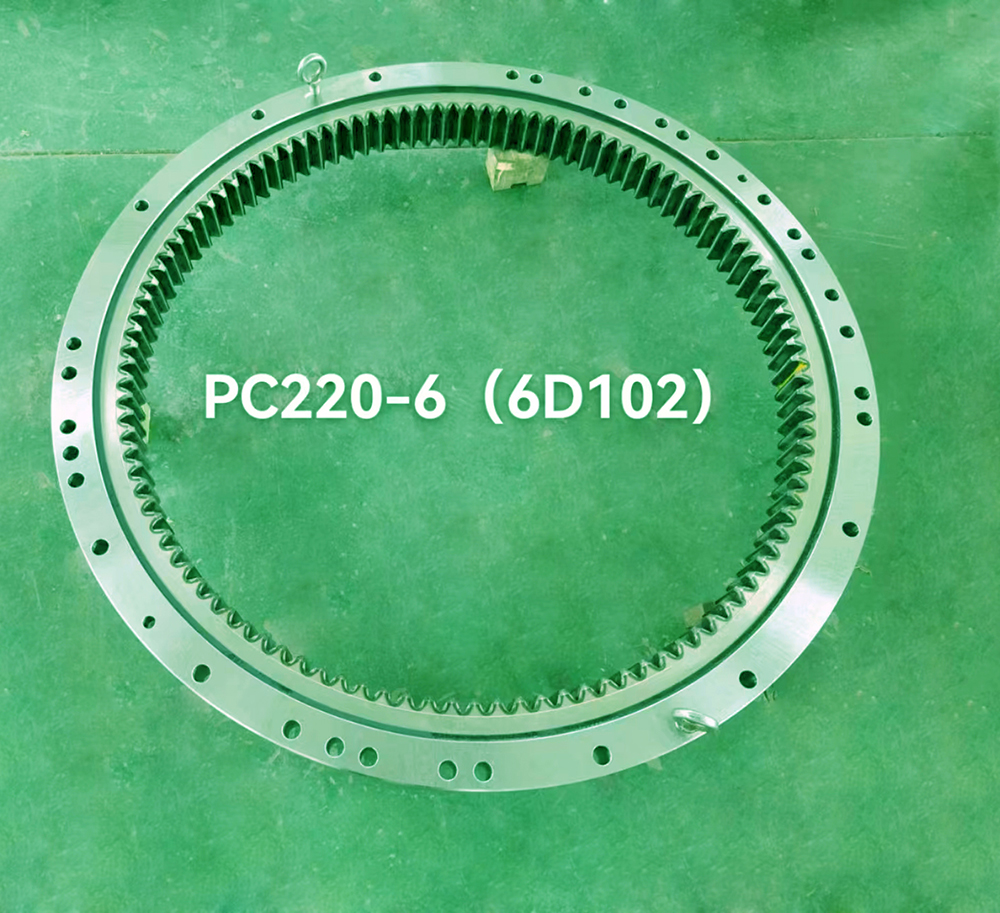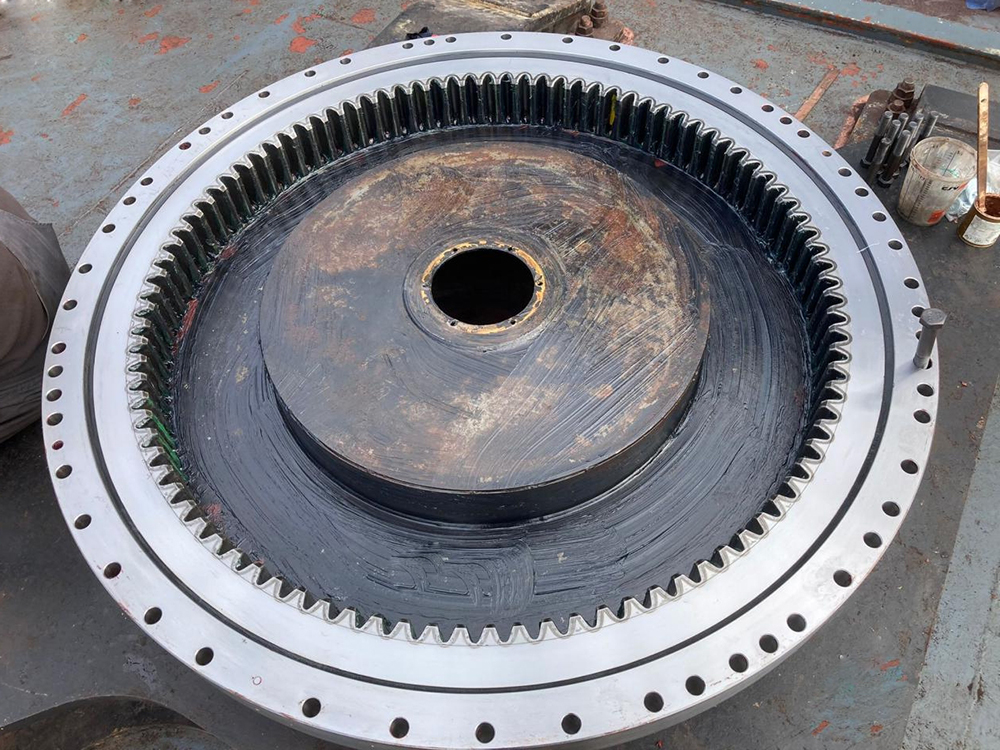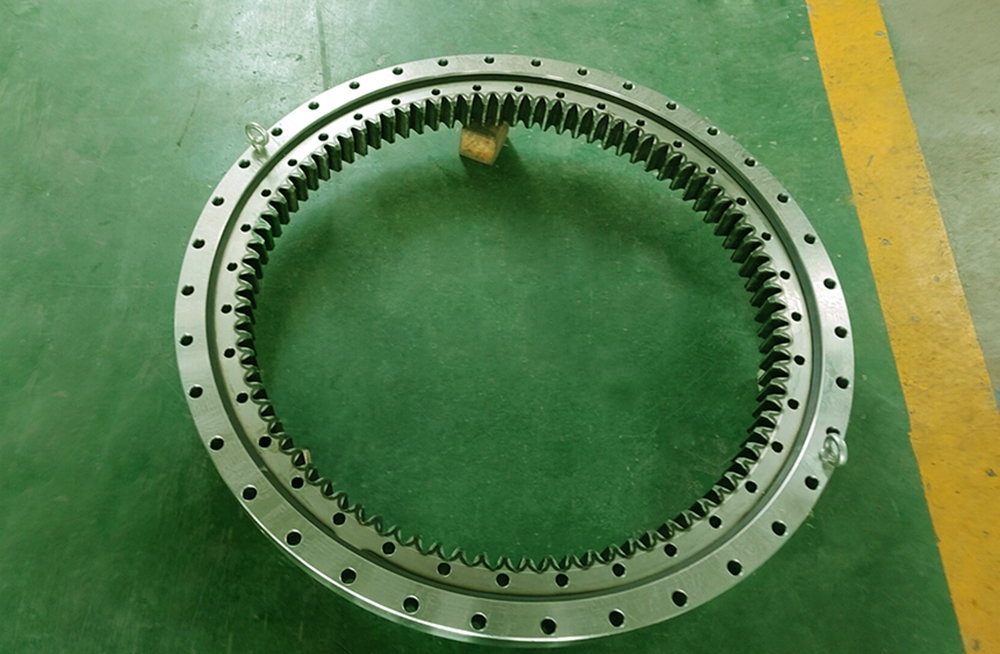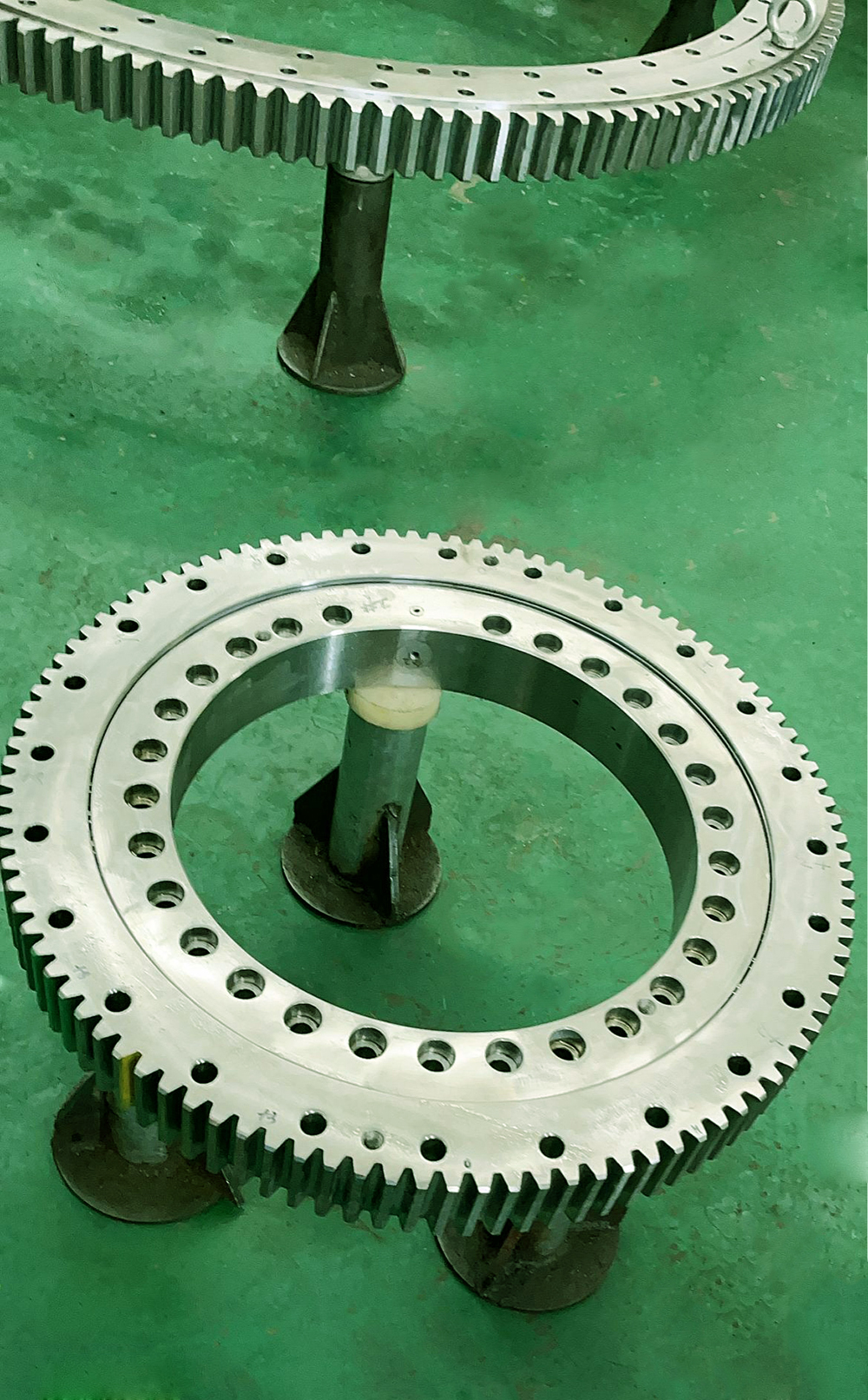Newsroom
How are crane slewing bearings used?
The crane slewing bearing is an indispensable and important component of the crane. It not only supports the rotation of the crane, but also bears a huge load. Reasonable use methods are essential to ensure the safety and work efficiency of the crane. The following are detailed usage methods and precautions for the crane slewing bearing.

Ⅰ. Installation
Installation is the first step in the use of slewing bearings. Correct installation can ensure its normal operation and extend its service life. The following steps need to be followed during installation:
1. Preparation: Before installation, first ensure that the mounting seat surface of the bearing is flat, clean, and free of any foreign matter. This is to ensure that the slewing bearing and the seat surface can fit completely and avoid stress concentration caused by unevenness.
2. Place the bearing: Carefully place the slewing bearing on the pre-prepared mounting seat surface to ensure its accurate position.
3. Fix the bearing: According to the specific installation requirements, use bolts or other fixing devices to firmly fix the bearing on the seat surface. When fixing, operate according to the torque requirements provided by the manufacturer to ensure a stable connection.
4. Check alignment: After the fixation is completed, check whether the slewing bearing is aligned with other mechanical parts to avoid unnecessary wear and damage during the work process.

Ⅱ. Lubrication
Lubrication is an important part of maintaining the normal operation of the slewing bearing. Proper lubrication can reduce friction and lower temperature, thereby extending the service life of the bearing. The following points should be noted when lubricating:
1. Select lubricant: According to the manufacturer's recommendations, select a lubricant suitable for the working environment and load requirements. Common lubricants include greases and oils, and each lubricant has its specific application scenario.
2. Lubrication cycle: Lubricate according to the prescribed lubrication cycle to avoid increased bearing wear due to long-term non-lubrication.
3. Lubrication method: Select a suitable lubrication method according to the specific situation, such as manual refueling, automatic lubrication system, etc. Ensure that the lubricant can be evenly distributed inside the bearing to achieve the best effect.

Ⅲ. Inspection
Regular inspection is a key step to ensure the normal operation of the slewing bearing. Through regular inspection, potential problems can be discovered in time and corresponding measures can be taken. The inspection includes:
1. Working status: Observe whether the slewing bearing has abnormal noise, vibration or temperature rise. These are all signs of possible failure.
2. Lubrication: Check whether the lubrication system is working properly, confirm whether the lubricant is sufficient, and replenish or replace it in time.
3. Fastener inspection: Regularly check whether the fixing bolts and other fasteners are loose, and ensure that they maintain proper preload to prevent safety hazards caused by looseness.

Ⅳ. Maintenance
Maintenance work is an important measure to extend the service life of the slewing bearing. According to the manufacturer's recommendations, perform the following maintenance work regularly:
1. Cleaning: Regularly clean the slewing bearing and its surroundings to prevent dust and dirt from entering the bearing.
2. Replace lubricant: Regularly replace the lubricant according to the usage to maintain good lubrication effect.
3. Fastener maintenance: Regularly check and tighten all connectors to ensure that they are in good working condition.
Ⅴ. Precautions
When using the crane slewing bearing, you should also pay attention to the following points to ensure its safety and effectiveness:
1. Avoid overload: Use it reasonably according to the load requirements of the crane, and never overload it to avoid equipment damage or accidents.
2. Avoid long-term continuous work: Long-term continuous operation will cause the equipment to overheat. Work and rest time should be properly arranged to ensure that the equipment is in good condition.
3. Avoid sudden stop or start: During operation, sudden stop or start should be avoided to avoid impact and damage to the bearing.
4. Follow the operating manual: The most important thing is to operate and maintain it strictly in accordance with the requirements of the specific model and the instruction manual provided by the manufacturer. This not only improves the efficiency of the equipment, but also effectively ensures the safety of the operator.
Conclusion
As a key component in heavy machinery, the correct use of the crane slewing bearing is crucial. Through reasonable installation, regular lubrication, careful inspection and scientific maintenance, its service life can be effectively extended and the crane operation efficiency can be improved. In actual applications, it is necessary to always follow the guidelines provided by the manufacturer and make flexible adjustments based on specific working conditions to achieve safe and efficient operation goals.


